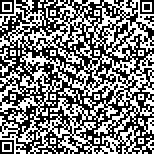| 摘要: |
| 目的 徽州古道属于典型的乡村遗产廊道,探究徽州古道地区旅游资源空间分布格局和影响因素,能够为乡村遗产廊道的旅游资源多样化发展和旅游空间规划提供参考。方法 文章筛选4 882项徽州古道地区旅游资源作为研究对象,分别运用平均最近邻指数、标准差椭圆、核密度估计等空间统计方法,对其空间分布类型及均衡程度、方向性特征、分布密度与集聚形态进行测度,并运用最小二乘法(OLS)模型和地理加权回归模型(GWR),探究徽州古道地区旅游资源分布影响因素的空间异质性。结果 (1)徽州古道地区的区县之间存在旅游资源错位现象,歙县和婺源县资源数量较多;各子类别旅游资源数量不均衡,以地文景观类和历史遗迹类为主。(2)从分布类型和均衡程度而言,整体旅游资源及6子类旅游资源分布特征均为集聚。(3)从方向分异而言,各类旅游资源标准差椭圆均呈东北—西南向分布特征,椭圆中心处于研究区域中部。(4)从空间密度而言,旅游资源整体空间密度呈“双核多中心”的分布格局。(5)旅游资源的分布状态受气候因素、经济发展、交通通达、旅游基础4个层面因素的影响,人文类影响因素比自然类影响因素的作用范围更广。结论 徽州古道地区应牢牢把握旅游资源在空间、类别及影响因素之间的分异特点,在此基础上制定差异化发展方案,寻求具有乡村遗产廊道发展特色的文旅传承之路,最后根据不同地区旅游资源的影响机制因地制宜地确定扶持计划。 |
| 关键词: 旅游资源 空间异质性 影响因素 地理加权回归 乡村遗产廊道 |
| DOI:10.7621/cjarrp.1005-9121.20250321 |
| 分类号:F592.7;F327 |
| 基金项目:国家社会科学基金项目“徽州古道线性文化遗产价值认知与活态保护研究”(22BSH085);安徽省文化和旅游科研课题项目“徽州古道保护传承与活化利用研究”(WL2023YB01) |
|
| STUDY ON THE SPATIAL PATTERN AND INFLUENCING MECHANISM OF TOURISM RESOURCES IN RURAL HERITAGE CORRIDOR AREAS: TAKING HUIZHOU ANCIENT ROAD AS AN EXAMPLE |
|
Nie Huijuan1, Zhang Quan1,2
|
|
1.College of Architecture and Art, Hefei University of Technology, Hefei 230601, Anhui, China;2.Anhui Provincial Key Laboratory of Digitalized Conservation and Innovative Revitalization of Ancient Huizhou Villages, Hefei 230601, Anhui, China
|
| Abstract: |
| The Huizhou Ancient Road belongs to a typical rural heritage corridor, and exploring the spatial distribution pattern of tourism resources and influencing factors in the Huizhou Ancient Road area can provide a reference for the diversified development of tourism resources and tourism spatial planning in the rural heritage corridor. Selecting 4 882 tourist resources in Huizhou Ancient Road area as the research object, this research measured their spatial distribution type, equilibrium degree, directionality, distribution density and agglomeration form by means of mean nearest neighbor index, standard deviation ellipse, kernel density estimation and other spatial statistical methods, and explored the spatial heterogeneity of the factors influencing the distribution of resources in Huizhou Ancient Road region by the least square method (OLS) model and geographical weighted regression model (GWR). The results were showed as follows. (1) There was a mismatch of tourism resources between districts and counties in Huizhou Ancient Road area, and the number of resources in Shexian and Wuyuan counties was higher; the number of tourism resources in each subcategory was not balanced, with the category of geographic landscapes and historical relics as the main categories. (2) In terms of distribution type and degree of balance, the spatial distribution characteristics of overall tourism resources and six sub-categories showed a tendency toward agglomeration. (3) In terms of directional differentiation, the standard deviation ellipse of each type of tourism resources showed a northeast-southwest distribution characteristic, and the centre of the ellipse was in the middle of the study area. (4) In terms of spatial density, the overall spatial density of tourism resources showed the distribution pattern of "dual-core multi-centre". (5) The distribution of tourism resources was influenced by four factors, namely, climate, economic development, traffic access, and tourism foundation, and humanistic influences played a wider role than natural influences. Therefore, the Huizhou Ancient Road area should firmly grasp the differentiated characteristics of tourism resources in space, categories and among influencing factors. On this basis, a differentiated development programme should be formulated, a cultural and tourism heritage path with the characteristics of rural heritage corridor development should be sought, and finally, a support plan should be determined in accordance with the impact mechanisms of tourism resources in different regions. |
| Key words: tourism resources spatial heterogeneity influencing factors geographically weighted regression rural heritage corridors |

